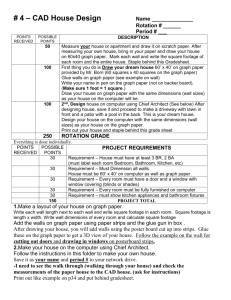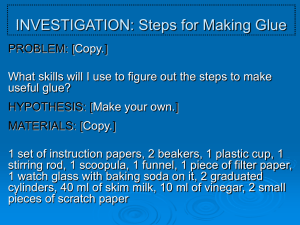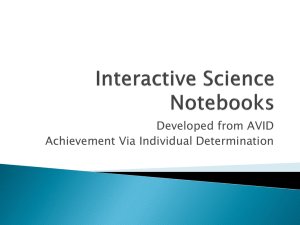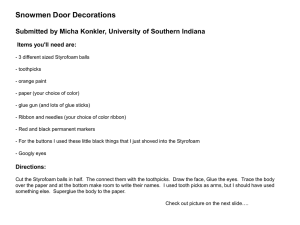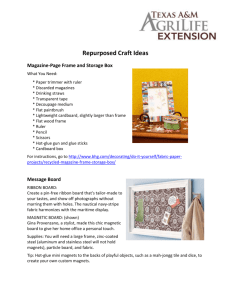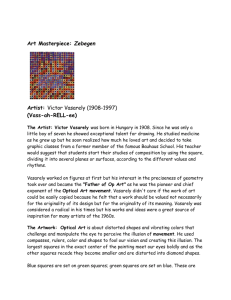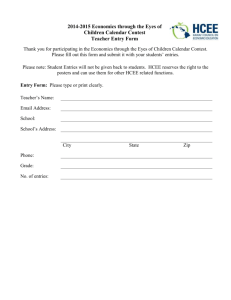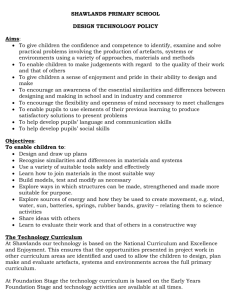FoldedLines1
advertisement
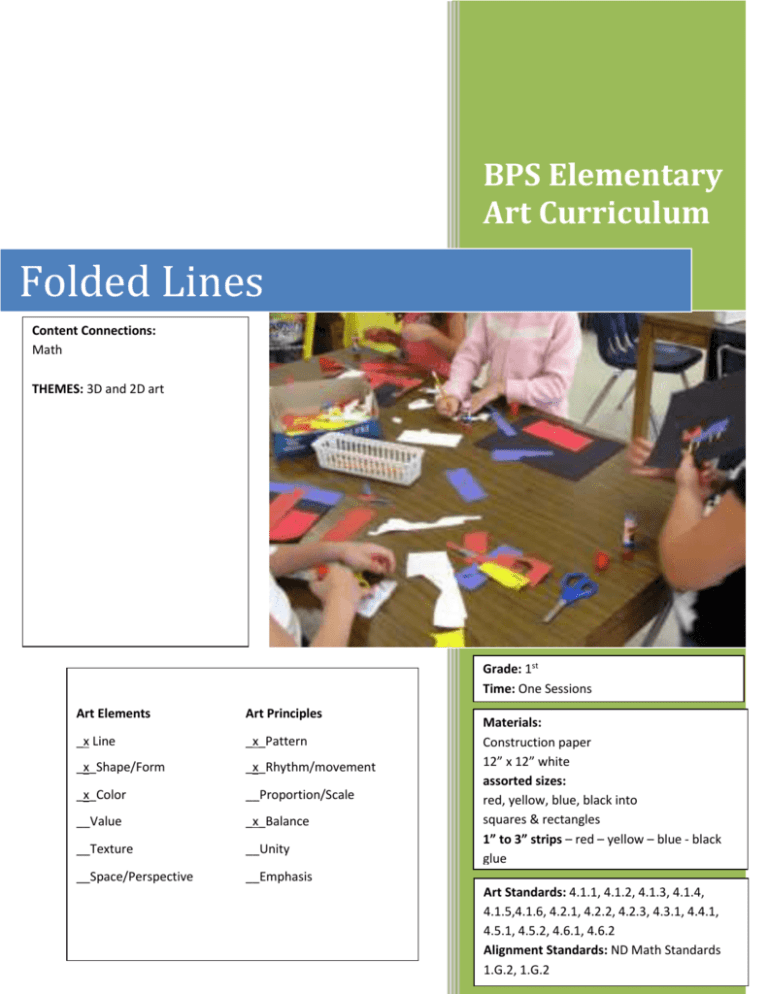
BPS Elementary Art Curriculum Folded Lines Content Connections: Math THEMES: 3D and 2D art Grade: 1st Time: One Sessions Art Elements Art Principles _x Line _x_Pattern _x_Shape/Form _x_Rhythm/movement _x_Color __Proportion/Scale __Value _x_Balance __Texture __Unity __Space/Perspective __Emphasis Materials: Construction paper 12” x 12” white assorted sizes: red, yellow, blue, black into squares & rectangles 1” to 3” strips – red – yellow – blue - black glue Art Standards: 4.1.1, 4.1.2, 4.1.3, 4.1.4, 4.1.5,4.1.6, 4.2.1, 4.2.2, 4.2.3, 4.3.1, 4.4.1, 4.5.1, 4.5.2, 4.6.1, 4.6.2 Alignment Standards: ND Math Standards 1.G.2, 1.G.2 Vocabulary: Shape, color, line, painter, painting, sculptor, sculpture, artist I Cans/ Objectives: 1. I can use new art vocabulary when talking about my project. 2. I can create a work of art that has both 2D and 3D elements 3. I can learn how to produce a work of art based on famous artists. Lesson description: Students will learn about two different artists, Alexander Calder and Piet Mondrian. They will compare the two types of art that these artists used -sculpture and painting. The students create their own 3D work of art combining these two artist’s styles. Teacher Background Knowledge: Teacher need to research and find example of Alexander Calder’s sculptures and Piet Mondrian’s painting. Make an example to have ready to show your students. Most of all have fun! Preparation: 1. Cut construction paper and set in trays to be shared at table/groups. 2. Teacher should make a sample beforehand to understand lesson. Lesson: 1. Gather students in a reading circle area. Show them pictures of the artist’s works. 2. Pass out a white 12”x12” construction paper square to each student. Students now choose 5 or more construction paper shapes from the trays at their tables. They should choose a variety of sizes, shapes, and colors. Have them arrange the shapes on their white square. Encourage them to explore their placement, rearranging to see which looks best. Shapes can overlap, but need to stay flat. Glue down the largest shapes first, then the overlapping ones. If students are using a glue stick, then have them glue down around the edges. If using white glue, have them use a dot in each corner. Reminder: A dot, a dot, a dot will do, any more is too much glue! 3. Students choose 3 to 5 strips from the trays. Encourage choosing a variety of colors and sizes. 4. Fold the strips using a variety of techniques. Demonstrate how students can make a folded “foot” on the end of their strip to create “feet” that then can be glued to the square base. 5. Glue the strips to the base, creating an interesting sculpture. Strips may piggyback each other, overlap, and twist. Encourage careful planning before gluing the strips down. After gluing, hold the “feet” of the strips down for a silent ten second count so the glue has time to stick. 6. Have students give their work the “shake test”. Just a little shake to make sure the strips are glued on well enough. Glue down anything that pops up. 7. Students sign their name in the lower right hand corner with pencil. Assessment Name___________________Lesson______________________ Thumbs Down Don’t Know Thumbs Up Assessment Question Did you use your personal best during this lesson? Did you actively listen and follow directions? Did you use your creativity? (is it original?) Did you complete your project? Did you incorporate the art media? Does the artwork show the elements and/or principles discussed? Can you tell me what 3D means?
